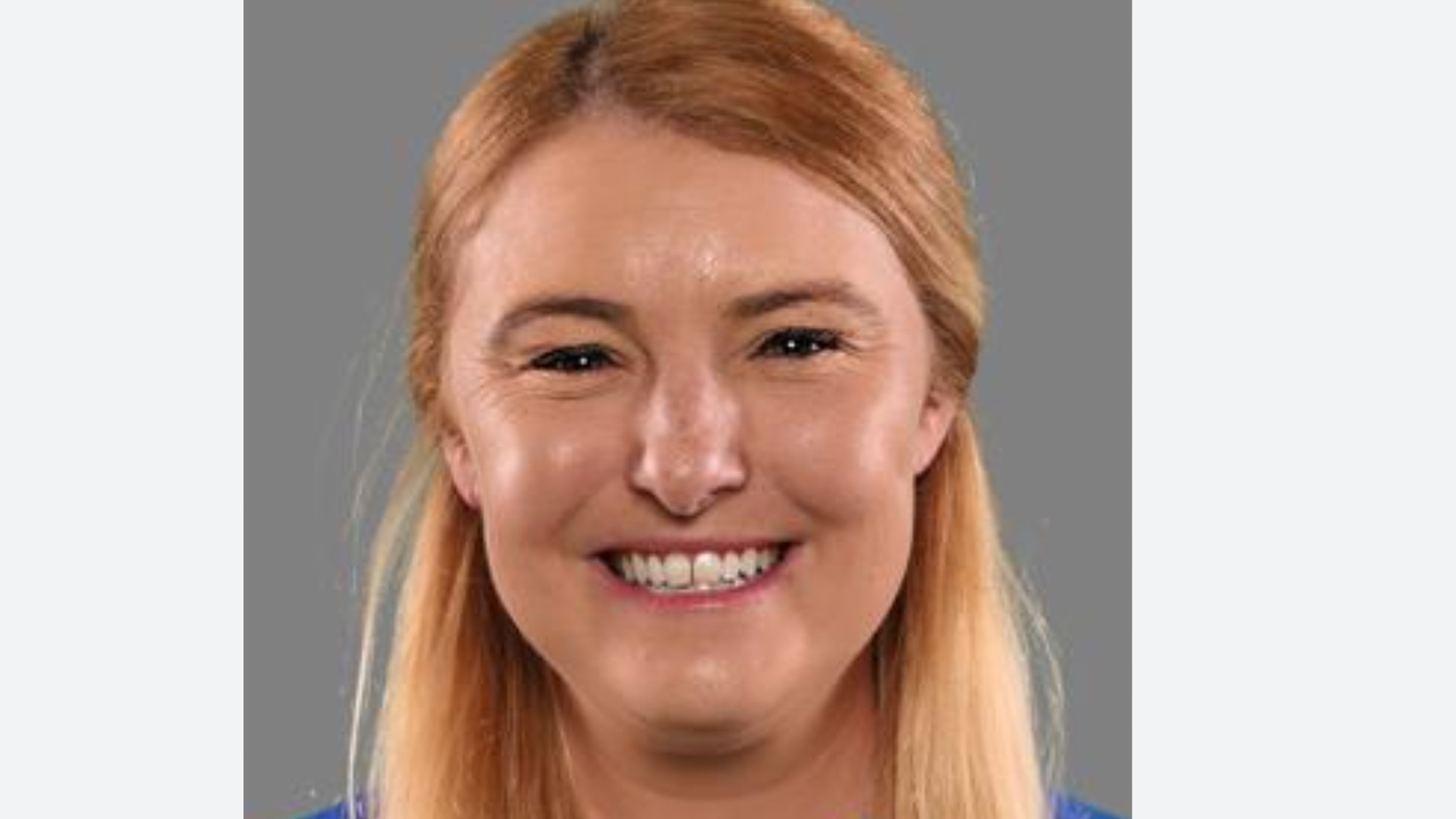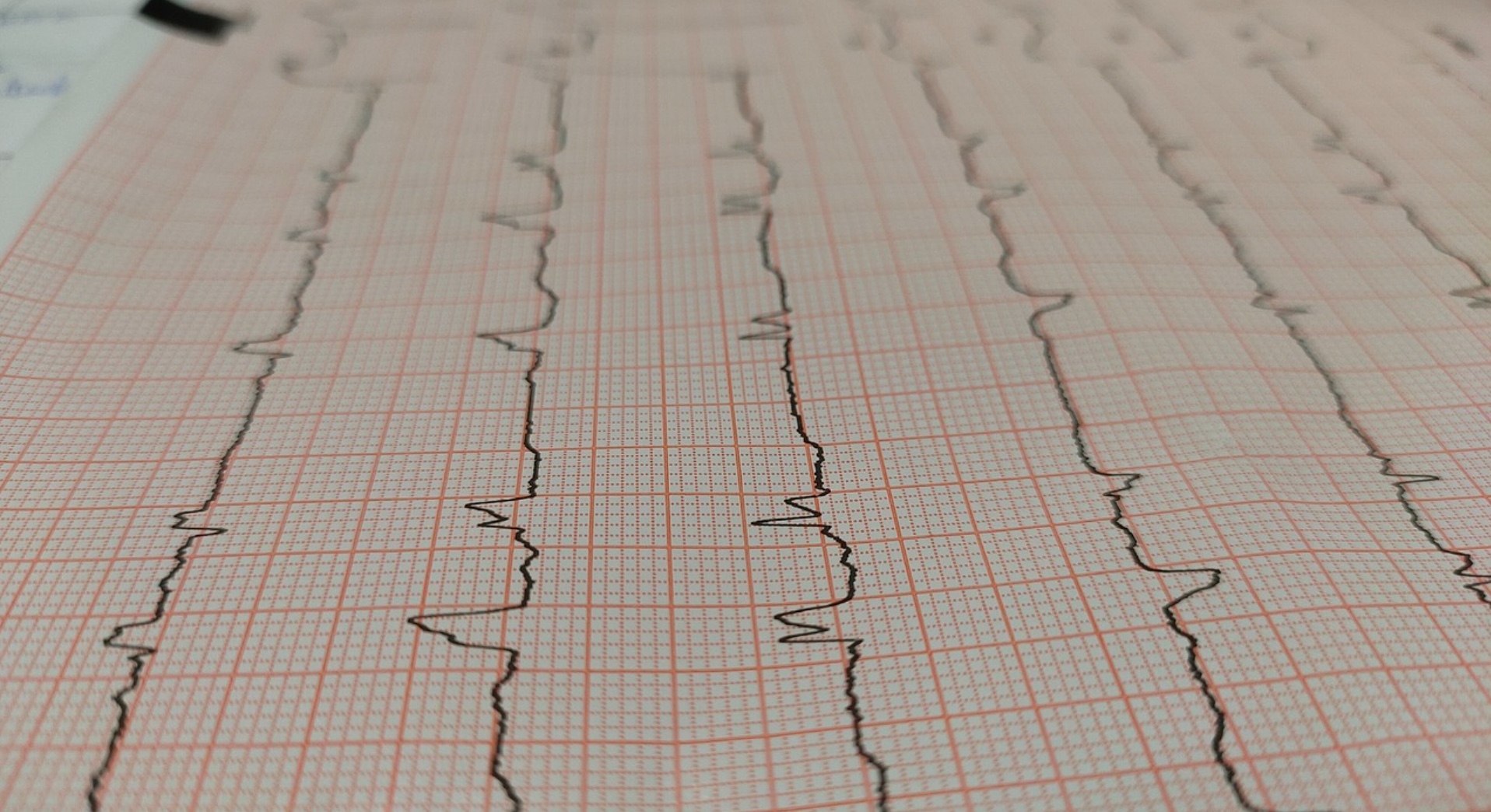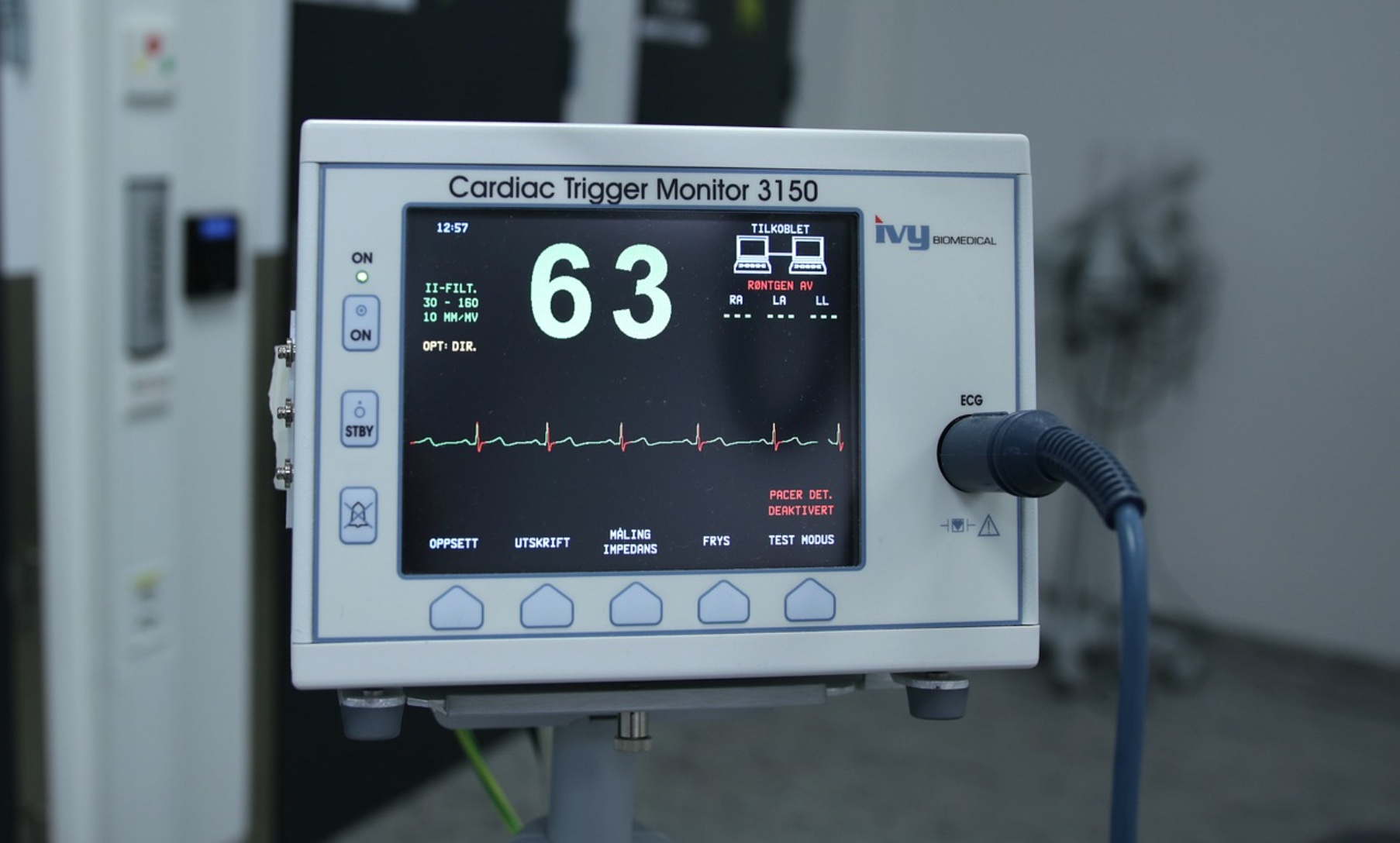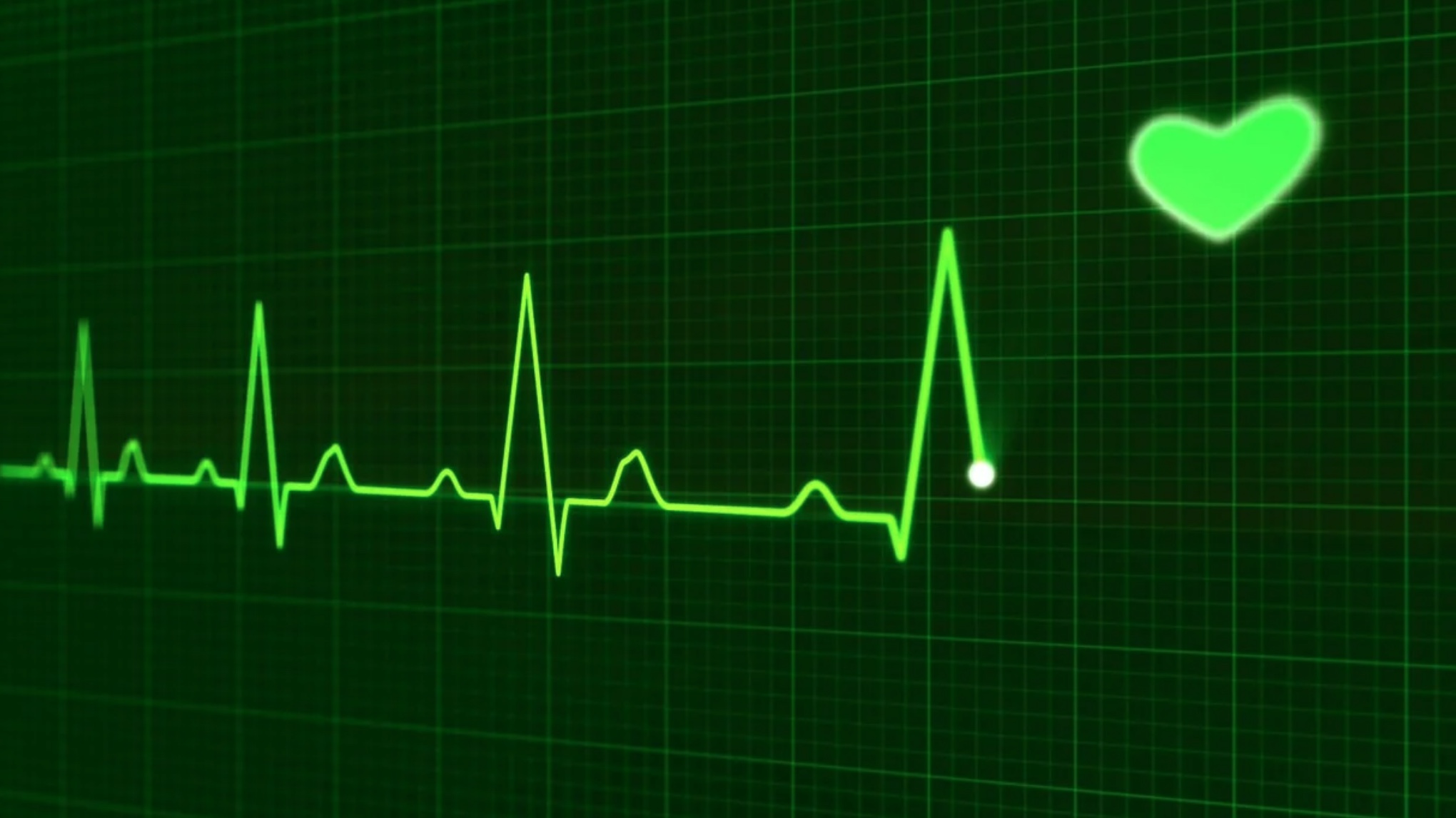Tragedy struck as a young athlete died of a sudden heart attack.
Lilly Kimbell

via Twitter
Former college tennis star Lilly Kimbell died of a heart attack at 31 after she suddenly collapsed at home and was rushed to the hospital.
A massive heart attack

via Fox News
Despite efforts to perform CPR and save her life, doctors determined she had a massive heart attack. The lack of oxygen left her brain unable to regain consciousness, and she was removed from life support.
Successful tennis player

via pixabay
Kimbell was one of the most successful tennis players in collegiate history. She won a staggering 197 victories, including 109 in doubles and 88 in singles. She reached the NCAA Quarterfinals four times.
University of Georgia

via Fox News
University of Georgia head coach Jeff Wallace said, “We were stunned and heartbroken to learn of Lilly passing away. I will always remember how she helped create a culture of excellence with her attitude and work ethic.”
Fantastic teammate

via Fox News
“Lilly was a fantastic teammate and was always smiling and laughing during practice and matches. She ranks as one of the most successful doubles players in Georgia tennis history,” he added.
Her sophomore year

via Fox News
“During the spring of her sophomore year, she went undefeated in doubles with Maho (Kowase), and their 22-match winning streak is still a school record. Our thoughts and prayers go out to her family,” her coach said.
Kimbell’s sister

via Fox News
Kimbell’s sister, Samantha Gillas, said, “Yesterday heaven gained another angel. I really don’t know what to say. I am lost for words and in complete shock, but at the same time I have so much I could say,” her sister continued.
Bad dream

via Fox News
“It all seems so surreal and I’m just waiting to wake up from this bad dream and I’ll see you coming downstairs,” her sister continued.
Make everyone smile

via pixabay
“Besides what you did on the court I looked up to you as a person. You had this ability to make everyone smile. Whenever we walked into the room you would be surrounded by people laughing and smiling. Everyone seemed to gravitate towards you,” Gillas added.
Loved by so many

via pixabay
“I’m still trying to process why God had this happen to you at 31 years old. I shouldn’t had to say goodbye to my sister at 22 years old. I love you so much Lilly. I know you’re looking down at us watching over. You were so talented and loved by so many,” she concluded.
In recent years

via pixabay
In recent years, there has been a growing concern about the incidence of heart attacks among young individuals. Traditionally seen as a condition affecting the older population, heart attacks occurring in younger people have raised questions about the factors contributing to this trend.
Prevention and early intervention

via pixabay
While heart attacks in the young are relatively rare compared to older adults, they can still happen, and understanding the risks is crucial for prevention and early intervention.
Associated with older age

via pixabay
While heart attacks are more commonly associated with older age groups, they can occur in individuals as young as their twenties and thirties. According to the American Heart Association, about 7% of heart attacks occur in adults under the age of 40. This statistic may seem low compared to the prevalence in older age groups, but it highlights that heart disease can affect individuals at any stage of life.
Genetics

via pixabay
Genetics: Family history plays a significant role in determining an individual’s risk of heart disease. If there is a history of heart attacks or other cardiovascular conditions in the family, the risk for younger members increases.
Unhealthy Lifestyle Choices

via pixabay
Unhealthy Lifestyle Choices: Poor dietary habits, lack of physical activity, smoking, and excessive alcohol consumption are major contributors to heart disease. Young people who engage in these behaviors are at a higher risk of developing cardiovascular problems early in life.
Obesity and Diabetes

via pixabay
Obesity and Diabetes: The rise in obesity rates and the prevalence of type 2 diabetes among young individuals have also contributed to the increase in heart attacks in this age group. Both conditions are significant risk factors for heart disease.
Increased risk

via pixabay
High Blood Pressure and High Cholesterol: Conditions like hypertension (high blood pressure) and dyslipidemia (high cholesterol) can accelerate the development of atherosclerosis, the buildup of plaque in the arteries, leading to an increased risk of heart attacks.
Drug Abuse

via pixabay
Drug Abuse: Substance abuse, including the use of stimulants like cocaine and methamphetamine, can cause cardiac complications, including heart attacks, even in young, otherwise healthy individuals.
Symptoms may be overlooked

via pixabay
One challenge with heart attacks in young adults is that symptoms may be overlooked or attributed to other causes. Chest pain or discomfort is the most common symptom of a heart attack, but young individuals may experience atypical symptoms such as shortness of breath, nausea, or fatigue.
Ignoring these symptoms

via pixabay
Ignoring these symptoms can delay diagnosis and treatment, increasing the risk of complications.
The warning signs

via pixabay
It’s essential for young people to be aware of the warning signs of a heart attack and to seek medical attention promptly if they experience any concerning symptoms, especially if they have risk factors such as a family history of heart disease or unhealthy lifestyle habits.
Preventing heart attacks

via pixabay
Preventing heart attacks in young adults involves adopting a heart-healthy lifestyle and managing risk factors effectively. Some preventive measures include eating a balanced diet. Emphasize fruits, vegetables, whole grains, lean proteins, and healthy fats while minimizing intake of processed foods, saturated fats, and added sugars.
Regular exercise

via pixabay
Regular exercise: Aim for at least 150 minutes of moderate-intensity aerobic activity or 75 minutes of vigorous-intensity activity per week, along with strength training exercises.
Maintaining a healthy weight

via pixabay
Maintaining a healthy weight: Achieving and maintaining a healthy weight reduces the risk of obesity-related conditions such as type 2 diabetes and hypertension.
Avoiding tobacco and limiting alcohol

via pixabay
Avoiding tobacco and limiting alcohol: Quit smoking if you smoke, and avoid exposure to secondhand smoke. Limit alcohol consumption to


medartix.com
January 16, 2025 at 5:33 pm
Really informative blog post.Much thanks again. Really Cool.
https://linkin.love
January 21, 2025 at 8:43 am
Muchos Gracias for your blog article.Much thanks again. Keep writing.
blonde porn
January 23, 2025 at 1:25 pm
levothyroxine from india – synthroid 112 mcg in india synthroid 150 coupon
印傳單
February 7, 2025 at 8:51 am
Thank you for creating this awesome articlew. I greatly appreciated it.
PY Proxy Manager
February 20, 2025 at 11:27 am
Thanks for the post.Thanks Again. Really Cool.
nsfw ai
February 21, 2025 at 9:14 am
Thanks again for the blog post.Thanks Again. Much obliged.
怡康婦產醫院
February 24, 2025 at 1:05 pm
Fantastic blog article.Really thank you! Really Cool.
krmoon
February 25, 2025 at 11:13 am
Appreciate you sharing, great article.Really looking forward to read more. Much obliged.
오피스타(평생주소) 바로가기
February 25, 2025 at 5:31 pm
I really liked your article.Thanks Again. Fantastic.
prestige induction base pressure cooker
February 26, 2025 at 4:45 pm
Thanks again for the article.Much thanks again. Cool.
pubg uc buy
February 27, 2025 at 2:27 pm
Hey, thanks for the article post.Much thanks again. Cool.
菠菜代投
March 1, 2025 at 10:33 am
This is one awesome article.Really looking forward to read more.
토지노솔루션
March 5, 2025 at 11:31 am
Awesome article post. Great.
whatsapp下载
March 13, 2025 at 10:16 am
Thanks for the blog.Really looking forward to read more. Really Cool.
博彩平台推薦
March 17, 2025 at 1:20 pm
Really appreciate you sharing this article. Awesome.
ip2world login
March 17, 2025 at 7:56 pm
Thank you for your blog article. Will read on…
Status game
March 18, 2025 at 11:22 am
Very neat post.Really thank you! Much obliged.
Status game
March 19, 2025 at 4:00 am
Very good post.Really looking forward to read more. Great.
led screen display manufacturers
March 20, 2025 at 1:37 am
I cannot thank you enough for the blog.Really looking forward to read more. Much obliged.
glass lids
March 20, 2025 at 8:53 pm
I really liked your blog.Really looking forward to read more. Much obliged.
佳文网
March 21, 2025 at 7:42 pm
Thanks a lot for the blog article. Will read on…
Mat bang vinhomes grand park
March 31, 2025 at 6:36 pm
metformin er dosage metformin online purchase does metformin lower your blood sugar can i stop taking metformin when my sugar back to normal
szradiant
April 1, 2025 at 1:58 pm
Really appreciate you sharing this blog.Much thanks again. Really Great.
爱思助手
April 1, 2025 at 11:47 pm
Enjoyed every bit of your article. Really Cool.
py proxy price
April 2, 2025 at 10:17 am
Major thanks for the blog article.Really looking forward to read more. Want more.
novada proxy
April 7, 2025 at 1:06 pm
I never thought about it that way, but it makes sense!Static ISP Proxies perfectly combine the best features of datacenter proxies and residential proxies, with 99.9% uptime.
https://www.orangenews.hk
April 7, 2025 at 3:29 pm
Very informative article.Much thanks again.
docker 代理
April 8, 2025 at 10:35 am
I never thought about it that way, but it makes sense!,Docker代理是什么?
novada proxy
April 8, 2025 at 2:16 pm
I never thought about it that way, but it makes sense!Static ISP Proxies perfectly combine the best features of datacenter proxies and residential proxies, with 99.9% uptime.
laserskärning aluminium
April 10, 2025 at 1:44 pm
I really like and appreciate your blog post.Really thank you!
fotmassasje apparat kjøp online
April 10, 2025 at 6:15 pm
I value the blog post.Thanks Again. Want more.
火种账号批发
April 11, 2025 at 11:02 pm
Thank you for your article post.Much thanks again. Want more.
維修金章抽濕機
April 14, 2025 at 6:46 pm
Thanks again for the blog post.Much thanks again. Much obliged.
Senix Garden Tools
April 16, 2025 at 5:42 pm
Very neat post. Really Great.
wabo66
April 16, 2025 at 10:16 pm
I really enjoy the article post.Really thank you! Want more.
wabado
April 17, 2025 at 9:21 am
Major thanks for the article post.Thanks Again. Great.
deepseek
April 18, 2025 at 9:39 am
Thanks a lot for the blog.Much thanks again. Great.
Dreamlux AI video
April 18, 2025 at 3:09 pm
Really enjoyed this post.Thanks Again. Really Cool.
fiber steel shafts
April 21, 2025 at 6:52 pm
Thanks again for the article post.Thanks Again. Fantastic.
dragon dance costume
April 27, 2025 at 10:12 am
I value the blog article.Thanks Again. Fantastic.
JNR VAPE
April 28, 2025 at 1:03 am
Really enjoyed this blog post.Thanks Again. Want more.
https://koreanviagra.kr/
April 29, 2025 at 8:08 am
We are searching for some people that might be interested in from working their home on a full-time basis. If you want to earn $200 a day, and you don’t mind creating some short opinions up, this might be perfect opportunity for you!
https://aaareplicaplaza.com/
May 1, 2025 at 9:02 am
Say, you got a nice article.Much thanks again. Great.
https://overseastudentloan.com
May 2, 2025 at 9:20 pm
Fantastic article post. Keep writing.
prada America's Cup
May 6, 2025 at 11:09 am
I cannot thank you enough for the article post. Great.
muriersilk
May 8, 2025 at 1:29 pm
Thanks-a-mundo for the post.Much thanks again.
novoline
May 9, 2025 at 12:52 pm
Thanks again for the blog.Thanks Again. Fantastic.
cryptocurrency exchange
May 12, 2025 at 11:57 am
A big thank you for your blog article.Really thank you! Really Great.
wikifx
May 13, 2025 at 7:24 am
I loved your post.Really thank you! Really Great.
Cubic Zirconia andCopper
May 13, 2025 at 1:03 pm
I am so grateful for your blog article. Keep writing.
https://www.vnhd.tv
May 13, 2025 at 6:53 pm
Really enjoyed this post.Thanks Again. Really Cool.
https://www.mjsmedicals.com
May 17, 2025 at 8:57 am
Im obliged for the blog post.Thanks Again. Will read on…
https://www.mjsmedicals.com
May 17, 2025 at 2:39 pm
I appreciate you sharing this blog article.Really looking forward to read more. Really Great.
https://www.eleglobals.com
May 17, 2025 at 10:03 pm
Thanks for the post.Really looking forward to read more. Great.
twinhorsebio.com
May 19, 2025 at 10:00 pm
wow, awesome blog post.Thanks Again. Will read on…
橙新聞
May 21, 2025 at 10:34 pm
Im obliged for the blog article.Really looking forward to read more. Much obliged.
Fuel Pump
May 22, 2025 at 6:13 pm
Thanks for the blog article.Much thanks again. Great.
leoguar beach cruiser ebikes
May 23, 2025 at 12:13 pm
Say, you got a nice blog.Thanks Again. Will read on…
cam lock suppliers
May 24, 2025 at 11:54 am
Very informative article.Really thank you! Great.
Sewage Treatment Plant Manufacturer
May 25, 2025 at 1:28 am
Hey, thanks for the post.Thanks Again.
佳文网
May 25, 2025 at 2:24 pm
A round of applause for your blog post. Awesome.
drop shipping
May 25, 2025 at 6:54 pm
I cannot thank you enough for the article.Much thanks again. Great.
dropshipping
May 25, 2025 at 11:02 pm
I value the article.Really thank you! Will read on…
novoline
May 26, 2025 at 1:09 pm
Thanks so much for the blog article. Great.
broker fee
May 26, 2025 at 8:51 pm
Thank you for your blog post. Really Cool.
brokerage
May 27, 2025 at 12:04 am
Looking forward to reading more. Great post.
fornd
May 28, 2025 at 11:04 pm
Fantastic blog article.Thanks Again.
fornd
May 29, 2025 at 9:04 am
I am so grateful for your blog article.Thanks Again. Much obliged.
super ace free 100
May 31, 2025 at 8:46 am
I cannot thank you enough for the blog.Thanks Again. Much obliged.
bingoplus
June 1, 2025 at 1:01 am
This is one awesome blog.Thanks Again. Really Great.
fortune gems
June 1, 2025 at 9:22 am
Say, you got a nice blog article.Really looking forward to read more. Awesome.
bingo plus
June 1, 2025 at 3:51 pm
A round of applause for your article post.Thanks Again. Fantastic.
온라인 바카라
June 3, 2025 at 12:38 am
Awesome post.Much thanks again.
Locstar
June 3, 2025 at 10:05 am
Really informative post.Much thanks again. Will read on…
https://gliesebar.com
June 5, 2025 at 8:03 am
Thanks for sharing, this is a fantastic article.Really looking forward to read more. Keep writing.
electrosurgery analyzer
June 5, 2025 at 9:35 pm
I value the blog post. Great.
AaronSpemi
June 6, 2025 at 2:38 pm
simvastatin kmart pharmacy: Pharm Express 24 – Viagra with Dapoxetine
bitget.com
June 6, 2025 at 3:52 pm
I really enjoy the blog post.Really thank you! Awesome.
Bitget Exchange: Crypto Trading Platform
June 7, 2025 at 6:18 am
I think this is a real great article. Cool.
Rubber harness
June 7, 2025 at 10:07 am
Thank you for your post.Really thank you! Really Cool.
Rodneycic
June 7, 2025 at 11:33 am
https://vgrsources.com/# viagra gold
BrandonZense
June 7, 2025 at 11:40 am
buy viagra in us online [url=https://vgrsources.com/#]VGR Sources[/url] cheap viagra online canada
JamesDup
June 7, 2025 at 11:50 am
over the counter female viagra: VGR Sources – viagra 25mg price in india
BillyCoomb
June 7, 2025 at 12:10 pm
best generic viagra from india: VGR Sources – viagra 50mg online
BrianTUB
June 7, 2025 at 12:12 pm
what does viagra do: VGR Sources – viagra 100 price
JamesDup
June 7, 2025 at 3:37 pm
where can you buy viagra for women: VGR Sources – sildenafil 20 mg tablet cost
BillyCoomb
June 7, 2025 at 3:51 pm
low price viagra: viagra sublingual – viagra online fast delivery
BrandonZense
June 7, 2025 at 3:55 pm
viagra 500mg tablet price in india [url=https://vgrsources.com/#]VGR Sources[/url] online viagra india
BrianTUB
June 7, 2025 at 4:31 pm
viagra uk paypal: VGR Sources – purchase generic viagra online
Rodneycic
June 7, 2025 at 6:51 pm
https://vgrsources.com/# viagra price online india
JamesDup
June 7, 2025 at 7:23 pm
sildenafil singapore: VGR Sources – viagra pharmacy usa
BillyCoomb
June 7, 2025 at 7:31 pm
how to buy sildenafil without a prescription: cheap generic viagra pills – prescription viagra
BrandonZense
June 7, 2025 at 8:09 pm
buy viagra canada online [url=https://vgrsources.com/#]VGR Sources[/url] generic viagra 120mg
BrianTUB
June 7, 2025 at 8:48 pm
buying sildenafil 100mg: can i buy viagra in canada over the counter – where to buy viagra usa
JamesDup
June 7, 2025 at 11:14 pm
generic viagra south africa: VGR Sources – sildenafil tablets 100 mg
BillyCoomb
June 7, 2025 at 11:15 pm
female viagra 50 mg: viagra professional online – viagra 500
BrandonZense
June 8, 2025 at 12:27 am
sildenafil 100mg tablets for sale [url=https://vgrsources.com/#]VGR Sources[/url] sildenafil mexico price
BrianTUB
June 8, 2025 at 1:05 am
buy viagra with paypal australia: VGR Sources – buy female viagra from united states
Rodneycic
June 8, 2025 at 2:08 am
https://vgrsources.com/# viagra generic cost
BillyCoomb
June 8, 2025 at 2:52 am
generic sildenafil in usa: 100mg viagra price – sildenafil 50mg without prescription
JamesDup
June 8, 2025 at 2:59 am
sildenafil 100mg free shipping: VGR Sources – buy generic viagra uk
BrandonZense
June 8, 2025 at 4:39 am
cheap viagra online united states [url=https://vgrsources.com/#]viagra pharmacy[/url] generic viagra online pharmacy uk
BillyCoomb
June 8, 2025 at 7:05 am
online viagra canadian pharmacy online: sildenafil over the counter us – cheap viagra for sale canada
JamesDup
June 8, 2025 at 7:31 am
cheapest price for sildenafil 100 mg: VGR Sources – compare sildenafil prices
BrandonZense
June 8, 2025 at 9:49 am
sildenafil tablets 100mg [url=https://vgrsources.com/#]VGR Sources[/url] viagra 100mg uk
BrianTUB
June 8, 2025 at 10:50 am
best viagra tablets in india online: VGR Sources – sildenafil online uk
BillyCoomb
June 8, 2025 at 11:43 am
best price viagra canada: viagra rx online – canadian pharmacies viagra
Rodneycic
June 8, 2025 at 12:18 pm
https://vgrsources.com/# generic viagra sildenafil citrate
JamesDup
June 8, 2025 at 12:37 pm
cialis vs viagra: VGR Sources – viagra fast delivery usa
BrandonZense
June 8, 2025 at 3:07 pm
cheap viagra generic canada [url=https://vgrsources.com/#]VGR Sources[/url] viagra 100mg price
BrianTUB
June 8, 2025 at 4:12 pm
viagra tablets for sale: VGR Sources – canadian online pharmacy viagra
BillyCoomb
June 8, 2025 at 4:21 pm
buy viagra soft online: buy viagra in uk – viagra uk cost
JamesDup
June 8, 2025 at 5:43 pm
generic viagra from india: VGR Sources – daily viagra
BrandonZense
June 8, 2025 at 8:30 pm
buy viagra tablet [url=https://vgrsources.com/#]VGR Sources[/url] buy viagra tablet online india
BillyCoomb
June 8, 2025 at 9:03 pm
viagra online safe: viagra online purchase – sildenafil 100 capsules
BrianTUB
June 8, 2025 at 9:35 pm
viagra for women price: VGR Sources – price of viagra 100mg in usa
JamesDup
June 8, 2025 at 10:54 pm
buy viagra online cheap no prescription: VGR Sources – viagra for women online
Rodneycic
June 8, 2025 at 11:35 pm
https://vgrsources.com/# cheap viagra pills india
BrandonZense
June 9, 2025 at 1:53 am
viagra over the counter cost [url=https://vgrsources.com/#]VGR Sources[/url] how to buy sildenafil
BrianTUB
June 9, 2025 at 3:00 am
online viagra: sildenafil 5mg price – viagra.com
JamesDup
June 9, 2025 at 4:04 am
can i buy over the counter viagra: how much is real viagra – discount generic viagra canada
BillyCoomb
June 9, 2025 at 6:27 am
buy sildenafil 200mg: buy sildenafil no prescription – order sildenafil from canada
BrandonZense
June 9, 2025 at 7:15 am
sildenafil 25 mg india [url=https://vgrsources.com/#]VGR Sources[/url] how can i get generic viagra
BrianTUB
June 9, 2025 at 8:26 am
sildenafil 25 mg: VGR Sources – cost for viagra prescription
JamesDup
June 9, 2025 at 9:24 am
find viagra: genuine viagra – buy cheap sildenafil online uk
Rodneycic
June 9, 2025 at 11:01 am
https://vgrsources.com/# sildenafil 100mg online canada
BillyCoomb
June 9, 2025 at 11:23 am
sildenafil 100mg usa: VGR Sources – buy sildenafil without a prescription
BrandonZense
June 9, 2025 at 12:54 pm
sildenafil from mexico [url=https://vgrsources.com/#]VGR Sources[/url] how much is viagra in usa
BrianTUB
June 9, 2025 at 2:12 pm
purchase viagra online from canada: VGR Sources – pinkviagraforwomen
JamesDup
June 9, 2025 at 2:55 pm
sildenafil online united states: how to get viagra in india – sildenafil 100 capsule
BillyCoomb
June 9, 2025 at 4:18 pm
best online price for viagra: sildenafil tablet brand name – sildenafil generic drug cost
BrandonZense
June 9, 2025 at 6:25 pm
viagra without a rx [url=https://vgrsources.com/#]VGR Sources[/url] where can i buy viagra for women
BrianTUB
June 9, 2025 at 7:36 pm
viagra canada online pharmacy: VGR Sources – best sildenafil pills
JamesDup
June 9, 2025 at 8:08 pm
sildenafil tablets 100mg: sildenafil 50mg coupon – prescription viagra
Rodneycic
June 9, 2025 at 10:32 pm
https://vgrsources.com/# over the counter generic sildenafil
BrandonZense
June 9, 2025 at 11:48 pm
where can you buy viagra for women [url=https://vgrsources.com/#]VGR Sources[/url] buy viagra 200mg
BrianTUB
June 10, 2025 at 1:09 am
viagra voucher: VGR Sources – viagra soft gel capsules
JamesDup
June 10, 2025 at 1:26 am
canada drug sildenafil: buy cheap sildenafil – viagra fast delivery
BillyCoomb
June 10, 2025 at 1:53 am
how much is sildenafil in uk: viagra online lowest price – generic sildenafil 100mg tablet
BrandonZense
June 10, 2025 at 5:19 am
buy real viagra online india [url=https://vgrsources.com/#]viagra medication cost[/url] sildenafil daily
BillyCoomb
June 10, 2025 at 6:42 am
viagra cream price in india: VGR Sources – cheap real viagra canada
BrianTUB
June 10, 2025 at 6:43 am
cost of viagra australia: generic viagra over the counter – viagra online australia paypal
JamesDup
June 10, 2025 at 6:47 am
cost of sildenafil 30 tablets: how to order viagra without a prescription – viagra pills price in usa
Jamessap
June 10, 2025 at 10:07 am
http://lipipharm.com/# atorvastatin and antacids
Albertodom
June 10, 2025 at 11:14 am
Crestor Pharm [url=https://crestorpharm.shop/#]CrestorPharm[/url] Crestor Pharm
Alfonsocix
June 10, 2025 at 11:23 am
prednisone canada pharmacy: prednisone buy no prescription – prednisone over the counter
Billyhyday
June 10, 2025 at 11:45 am
crestor dosages: Crestor Pharm – Buy statins online discreet shipping
Alfonsocix
June 10, 2025 at 3:48 pm
Affordable Lipitor alternatives USA: can you drink alcohol while taking atorvastatin – USA-based pharmacy Lipitor delivery
Estebancix
June 10, 2025 at 4:05 pm
Semaglu Pharm: SemagluPharm – Buy Rybelsus online USA
Albertodom
June 10, 2025 at 4:08 pm
can rybelsus cause muscle pain [url=http://semaglupharm.com/#]Affordable Rybelsus price[/url] Semaglu Pharm
Billyhyday
June 10, 2025 at 5:00 pm
Lipi Pharm: LipiPharm – Lipi Pharm
Jamessap
June 10, 2025 at 5:50 pm
https://semaglupharm.com/# Rybelsus online pharmacy reviews
Alfonsocix
June 10, 2025 at 8:04 pm
Rybelsus online pharmacy reviews: Semaglu Pharm – Affordable Rybelsus price
Estebancix
June 10, 2025 at 8:17 pm
Lipi Pharm: Lipi Pharm – Lipi Pharm
Albertodom
June 10, 2025 at 8:54 pm
price of rybelsus [url=http://semaglupharm.com/#]FDA-approved Rybelsus alternative[/url] semaglutide skin sensitivity
Billyhyday
June 10, 2025 at 10:46 pm
CrestorPharm: CrestorPharm – No doctor visit required statins
Alfonsocix
June 11, 2025 at 12:24 am
Semaglu Pharm: Semaglu Pharm – SemagluPharm
Estebancix
June 11, 2025 at 12:32 am
prednisone 0.5 mg: PredniPharm – Predni Pharm
Jamessap
June 11, 2025 at 1:23 am
https://prednipharm.shop/# Predni Pharm
Albertodom
June 11, 2025 at 1:42 am
SemagluPharm [url=https://semaglupharm.com/#]SemagluPharm[/url] Semaglu Pharm
Billyhyday
June 11, 2025 at 5:16 am
lipitor generic side effects: what happens if you miss a dose of atorvastatin – Lipi Pharm
Alfonsocix
June 11, 2025 at 5:17 am
Rosuvastatin tablets without doctor approval: crestor 3.00 coupon – Crestor Pharm
Albertodom
June 11, 2025 at 7:03 am
canada buy prednisone online [url=http://prednipharm.com/#]average cost of prednisone[/url] PredniPharm
Alfonsocix
June 11, 2025 at 10:24 am
Crestor 10mg / 20mg / 40mg online: Best price for Crestor online USA – Crestor Pharm
FrankInsef
June 11, 2025 at 10:32 am
SemagluPharm: Rybelsus side effects and dosage – rybelsus anesthesia
https://www.orangenews.hk
June 11, 2025 at 11:48 am
A big thank you for your article post.Really looking forward to read more. Really Great.
Jamessap
June 11, 2025 at 12:15 pm
https://prednipharm.com/# Predni Pharm
Albertodom
June 11, 2025 at 12:29 pm
constipation with semaglutide [url=https://semaglupharm.com/#]Semaglu Pharm[/url] SemagluPharm
Billyhyday
June 11, 2025 at 12:47 pm
LipiPharm: LipiPharm – LipiPharm
Alfonsocix
June 11, 2025 at 3:47 pm
Predni Pharm: PredniPharm – Predni Pharm
橙新聞
June 11, 2025 at 4:36 pm
I am so grateful for your blog article.Thanks Again. Fantastic.
FrankInsef
June 11, 2025 at 5:01 pm
Predni Pharm: Predni Pharm – prednisone 20 mg tablets coupon
Albertodom
June 11, 2025 at 6:01 pm
Crestor mail order USA [url=http://crestorpharm.com/#]Order rosuvastatin online legally[/url] Safe online pharmacy for Crestor
Billyhyday
June 11, 2025 at 8:25 pm
Over-the-counter Crestor USA: CrestorPharm – CrestorPharm
Alfonsocix
June 11, 2025 at 9:16 pm
PredniPharm: prednisone daily – how can i get prednisone
FrankInsef
June 11, 2025 at 9:59 pm
Order rosuvastatin online legally: Safe online pharmacy for Crestor – CrestorPharm
Albertodom
June 11, 2025 at 11:39 pm
side effects of crestor in women [url=http://crestorpharm.com/#]CrestorPharm[/url] Crestor Pharm
Jamessap
June 11, 2025 at 11:52 pm
https://lipipharm.shop/# LipiPharm
Alfonsocix
June 12, 2025 at 2:46 am
LipiPharm: п»їBuy Lipitor without prescription USA – Lipi Pharm
橙新聞
June 12, 2025 at 2:51 am
Really appreciate you sharing this blog post.Really looking forward to read more. Great.
FrankInsef
June 12, 2025 at 3:03 am
PredniPharm: prednisone 20 mg tablet – Predni Pharm
Billyhyday
June 12, 2025 at 4:05 am
rosuvastatin tab 40mg: rosuvastatin para que sirve – Crestor Pharm
Albertodom
June 12, 2025 at 5:26 am
can you take rosuvastatin and atorvastatin together [url=https://crestorpharm.shop/#]CrestorPharm[/url] п»їBuy Crestor without prescription
Alfonsocix
June 12, 2025 at 8:24 am
LipiPharm: can lipitor cause dementia – does lipitor cause tinnitus
Billyhyday
June 12, 2025 at 10:10 am
LipiPharm: Lipi Pharm – Online statin drugs no doctor visit
Albertodom
June 12, 2025 at 11:07 am
Rybelsus 3mg 7mg 14mg [url=https://semaglupharm.com/#]rybelsus semaglutide tablets[/url] SemagluPharm
Jamessap
June 12, 2025 at 11:32 am
http://prednipharm.com/# PredniPharm
Alfonsocix
June 12, 2025 at 1:51 pm
Crestor home delivery USA: Affordable cholesterol-lowering pills – crestor nursing considerations
Billyhyday
June 12, 2025 at 3:54 pm
No doctor visit required statins: CrestorPharm – CrestorPharm
Albertodom
June 12, 2025 at 4:46 pm
Semaglu Pharm [url=https://semaglupharm.com/#]Rybelsus for blood sugar control[/url] rybelsus otc
Alfonsocix
June 12, 2025 at 7:07 pm
prednisone 20 mg tablets: Predni Pharm – prednisone buying
Billyhyday
June 12, 2025 at 9:19 pm
Lipi Pharm: 80 mg atorvastatin – Lipi Pharm
Albertodom
June 12, 2025 at 10:10 pm
SemagluPharm [url=http://semaglupharm.com/#]rybelsus 14 mg reviews[/url] rybelsus for obesity
Jamessap
June 12, 2025 at 11:23 pm
https://crestorpharm.shop/# ezetimibe and rosuvastatin
Alfonsocix
June 13, 2025 at 12:21 am
PredniPharm: ordering prednisone – buy prednisone online usa
Billyhyday
June 13, 2025 at 2:34 am
which is better lipitor or crestor: LipiPharm – LipiPharm
Alfonsocix
June 13, 2025 at 3:34 am
Atorvastatin online pharmacy: LipiPharm – USA-based pharmacy Lipitor delivery
Jamessap
June 13, 2025 at 3:47 am
https://semaglupharm.shop/# Semaglu Pharm
Albertodom
June 13, 2025 at 5:12 am
Lipi Pharm [url=https://lipipharm.shop/#]Lipi Pharm[/url] LipiPharm
PatrickroM
June 13, 2025 at 6:29 am
https://semaglupharm.com/# Affordable Rybelsus price
Billyhyday
June 13, 2025 at 9:10 am
Safe delivery in the US: glp 1 rybelsus – Semaglu Pharm
Alfonsocix
June 13, 2025 at 9:39 am
PredniPharm: prednisone sale – buy prednisone online fast shipping
coospider
June 13, 2025 at 11:09 am
Thank you for your blog.Really thank you!
Albertodom
June 13, 2025 at 11:39 am
SemagluPharm [url=https://semaglupharm.shop/#]Semaglu Pharm[/url] Semaglu Pharm
PatrickroM
June 13, 2025 at 12:15 pm
http://semaglupharm.com/# olympia semaglutide
Billyhyday
June 13, 2025 at 3:38 pm
Semaglu Pharm: Semaglutide tablets without prescription – FDA-approved Rybelsus alternative
Alfonsocix
June 13, 2025 at 3:50 pm
Crestor Pharm: images of rosuvastatin 5 mg – Crestor Pharm
Jamessap
June 13, 2025 at 4:33 pm
https://semaglupharm.shop/# Order Rybelsus discreetly
PatrickroM
June 13, 2025 at 5:57 pm
https://semaglupharm.com/# Semaglu Pharm
Albertodom
June 13, 2025 at 6:06 pm
Lipi Pharm [url=http://lipipharm.com/#]FDA-approved generic statins online[/url] Cheap Lipitor 10mg / 20mg / 40mg
TARARIUM
June 13, 2025 at 8:39 pm
Very neat article.Much thanks again. Really Cool.
Alfonsocix
June 13, 2025 at 9:57 pm
lipitor settlement: Discreet shipping for Lipitor – LipiPharm
Billyhyday
June 13, 2025 at 10:00 pm
lipitor class: Affordable Lipitor alternatives USA – Discreet shipping for Lipitor
PatrickroM
June 13, 2025 at 11:32 pm
https://semaglupharm.com/# SemagluPharm
Albertodom
June 14, 2025 at 12:29 am
Predni Pharm [url=http://prednipharm.com/#]5 mg prednisone daily[/url] PredniPharm
Alfonsocix
June 14, 2025 at 3:57 am
Predni Pharm: PredniPharm – Predni Pharm
Billyhyday
June 14, 2025 at 4:15 am
Crestor Pharm: Crestor Pharm – Crestor Pharm
PatrickroM
June 14, 2025 at 4:59 am
https://semaglupharm.com/# SemagluPharm
Jamessap
June 14, 2025 at 5:12 am
https://lipipharm.com/# No RX Lipitor online
Albertodom
June 14, 2025 at 6:36 am
Buy statins online discreet shipping [url=https://crestorpharm.com/#]Crestor Pharm[/url] Best price for Crestor online USA
Alfonsocix
June 14, 2025 at 9:51 am
SemagluPharm: ozempic and rybelsus – rybelsus prediabetes
Billyhyday
June 14, 2025 at 10:17 am
Crestor Pharm: rosuvastatin drug interactions – Crestor Pharm
PatrickroM
June 14, 2025 at 10:19 am
https://semaglupharm.shop/# SemagluPharm
Albertodom
June 14, 2025 at 12:27 pm
does rosuvastatin raise blood pressure [url=https://crestorpharm.com/#]Rosuvastatin tablets without doctor approval[/url] Crestor Pharm
PatrickroM
June 14, 2025 at 3:26 pm
http://semaglupharm.com/# SemagluPharm
Alfonsocix
June 14, 2025 at 3:28 pm
prednisone 12 mg: buy prednisone no prescription – 15 mg prednisone daily
Billyhyday
June 14, 2025 at 4:05 pm
CrestorPharm: what is rosuvastatin 20 mg used for – is it better to take crestor at night
Jamessap
June 14, 2025 at 5:59 pm
https://crestorpharm.shop/# Crestor Pharm
Albertodom
June 14, 2025 at 6:13 pm
Semaglu Pharm [url=http://semaglupharm.com/#]Semaglu Pharm[/url] Semaglu Pharm
PatrickroM
June 14, 2025 at 8:41 pm
http://semaglupharm.com/# Buy Rybelsus online USA
Alfonsocix
June 14, 2025 at 9:11 pm
LipiPharm: lipitor statin side effects – LipiPharm
https://a2c.chat
June 14, 2025 at 9:32 pm
I value the blog post.Thanks Again. Much obliged.
Billyhyday
June 14, 2025 at 9:59 pm
Lipi Pharm: LipiPharm – Lipi Pharm
Albertodom
June 15, 2025 at 12:02 am
what are the most common side effects of rybelsus [url=https://semaglupharm.shop/#]SemagluPharm[/url] low dose semaglutide
PatrickroM
June 15, 2025 at 1:53 am
http://semaglupharm.com/# Semaglu Pharm
Alfonsocix
June 15, 2025 at 2:43 am
Semaglu Pharm: Affordable Rybelsus price – Semaglu Pharm
Billyhyday
June 15, 2025 at 4:05 am
lipitor 80 mg price: LipiPharm – Cheap Lipitor 10mg / 20mg / 40mg
Albertodom
June 15, 2025 at 6:05 am
rosuvastatin warnings [url=https://crestorpharm.com/#]Crestor Pharm[/url] CrestorPharm
Jamessap
June 15, 2025 at 7:38 am
https://crestorpharm.shop/# rosuvastatin blood pressure
PatrickroM
June 15, 2025 at 7:52 am
https://semaglupharm.shop/# No prescription diabetes meds online
Alfonsocix
June 15, 2025 at 9:29 am
Crestor Pharm: CrestorPharm – Safe online pharmacy for Crestor
Billyhyday
June 15, 2025 at 10:41 am
SemagluPharm: Semaglu Pharm – rybelsus cost
Albertodom
June 15, 2025 at 11:57 am
brand prednisone [url=http://prednipharm.com/#]india buy prednisone online[/url] buy prednisone 40 mg
PatrickroM
June 15, 2025 at 1:03 pm
https://semaglupharm.com/# Buy Rybelsus online USA
Alfonsocix
June 15, 2025 at 3:06 pm
PredniPharm: prednisone 15 mg tablet – prednisone 40mg
Billyhyday
June 15, 2025 at 4:31 pm
Crestor Pharm: Buy cholesterol medicine online cheap – rosuvastatin and fenofibrate
Albertodom
June 15, 2025 at 5:47 pm
doses of rosuvastatin [url=https://crestorpharm.com/#]Crestor Pharm[/url] rosuvastatin calcium reviews
PatrickroM
June 15, 2025 at 6:15 pm
https://semaglupharm.com/# SemagluPharm
Alfonsocix
June 15, 2025 at 8:48 pm
Predni Pharm: where can i get prednisone – buy prednisone without a prescription best price
Billyhyday
June 15, 2025 at 10:22 pm
Online statin therapy without RX: crestor strengths – Crestor mail order USA
PatrickroM
June 15, 2025 at 11:29 pm
https://semaglupharm.com/# cheapest online semaglutide
Albertodom
June 15, 2025 at 11:41 pm
LipiPharm [url=https://lipipharm.shop/#]side effects of crestor vs lipitor[/url] can lipitor cause back pain
Alfonsocix
June 16, 2025 at 3:16 am
CrestorPharm: crestor side effects for women – Generic Crestor for high cholesterol
Robertmurdy
June 16, 2025 at 5:01 am
Meds From Mexico: Meds From Mexico – medication from mexico pharmacy
Robertenene
June 16, 2025 at 5:23 am
http://canadapharmglobal.com/# pharmacy com canada
SamuelKex
June 16, 2025 at 6:04 am
Meds From Mexico [url=https://medsfrommexico.com/#]Meds From Mexico[/url] mexican pharmaceuticals online
Jameswal
June 16, 2025 at 8:16 am
https://medsfrommexico.com/# medicine in mexico pharmacies
Micheldwexy
June 16, 2025 at 8:31 am
legitimate canadian pharmacy online: Canada Pharm Global – canadian pharmacy review
Robertenene
June 16, 2025 at 9:34 am
https://canadapharmglobal.com/# canada drugs reviews
Robertmurdy
June 16, 2025 at 9:55 am
purple pharmacy mexico price list: pharmacies in mexico that ship to usa – Meds From Mexico
SamuelKex
June 16, 2025 at 10:57 am
India Pharm Global [url=http://indiapharmglobal.com/#]India Pharm Global[/url] cheapest online pharmacy india
Micheldwexy
June 16, 2025 at 12:51 pm
Meds From Mexico: mexican drugstore online – Meds From Mexico
Robertenene
June 16, 2025 at 1:55 pm
http://indiapharmglobal.com/# indianpharmacy com
Robertmurdy
June 16, 2025 at 3:01 pm
Meds From Mexico: purple pharmacy mexico price list – Meds From Mexico
SamuelKex
June 16, 2025 at 4:06 pm
canadian pharmacy antibiotics [url=https://canadapharmglobal.shop/#]Canada Pharm Global[/url] pharmacy com canada
Jameswal
June 16, 2025 at 4:38 pm
https://medsfrommexico.com/# Meds From Mexico
Micheldwexy
June 16, 2025 at 5:27 pm
India Pharm Global: India Pharm Global – online pharmacy india
Robertenene
June 16, 2025 at 6:22 pm
https://medsfrommexico.com/# Meds From Mexico
Robertmurdy
June 16, 2025 at 8:06 pm
mexico drug stores pharmacies: best online pharmacies in mexico – Meds From Mexico
SamuelKex
June 16, 2025 at 9:02 pm
canada drug pharmacy [url=http://canadapharmglobal.com/#]canadian online drugstore[/url] reliable canadian pharmacy
Micheldwexy
June 16, 2025 at 9:44 pm
global pharmacy canada: canada drug pharmacy – canadian pharmacies compare
Robertenene
June 16, 2025 at 10:30 pm
https://indiapharmglobal.shop/# india pharmacy
Robertmurdy
June 17, 2025 at 12:52 am
Meds From Mexico: Meds From Mexico – Meds From Mexico
Jameswal
June 17, 2025 at 12:56 am
http://indiapharmglobal.com/# indian pharmacy paypal
SamuelKex
June 17, 2025 at 1:44 am
Meds From Mexico [url=https://medsfrommexico.com/#]purple pharmacy mexico price list[/url] Meds From Mexico
Micheldwexy
June 17, 2025 at 1:52 am
mexican pharmaceuticals online: п»їbest mexican online pharmacies – mexican mail order pharmacies
Robertenene
June 17, 2025 at 2:43 am
https://indiapharmglobal.shop/# India Pharm Global
Robertmurdy
June 17, 2025 at 6:34 am
India Pharm Global: indian pharmacies safe – India Pharm Global
Micheldwexy
June 17, 2025 at 7:25 am
safe canadian pharmacy: Canada Pharm Global – canadian pharmacy oxycodone
SamuelKex
June 17, 2025 at 7:32 am
India Pharm Global [url=http://indiapharmglobal.com/#]top 10 pharmacies in india[/url] indianpharmacy com
Robertmurdy
June 17, 2025 at 1:11 pm
Meds From Mexico: Meds From Mexico – Meds From Mexico
Micheldwexy
June 17, 2025 at 1:38 pm
mexican border pharmacies shipping to usa: mexican mail order pharmacies – Meds From Mexico
SamuelKex
June 17, 2025 at 2:05 pm
india online pharmacy [url=https://indiapharmglobal.com/#]top online pharmacy india[/url] indian pharmacy paypal
Robertenene
June 17, 2025 at 7:30 pm
https://indiapharmglobal.shop/# world pharmacy india
Robertmurdy
June 17, 2025 at 7:59 pm
India Pharm Global: India Pharm Global – India Pharm Global
Micheldwexy
June 17, 2025 at 8:00 pm
canadian world pharmacy: Canada Pharm Global – canada drugs online reviews
SamuelKex
June 17, 2025 at 8:49 pm
best rated canadian pharmacy [url=https://canadapharmglobal.shop/#]Canada Pharm Global[/url] my canadian pharmacy reviews
Robertenene
June 18, 2025 at 1:18 am
https://indiapharmglobal.com/# indian pharmacy online
Jameswal
June 18, 2025 at 1:53 am
https://canadapharmglobal.shop/# the canadian pharmacy
Micheldwexy
June 18, 2025 at 2:17 am
best online pharmacy india: India Pharm Global – online pharmacy india
Robertmurdy
June 18, 2025 at 2:42 am
cheapest online pharmacy india: online pharmacy india – India Pharm Global
SamuelKex
June 18, 2025 at 3:23 am
mexican mail order pharmacies [url=https://medsfrommexico.shop/#]Meds From Mexico[/url] Meds From Mexico
Henryvus
June 18, 2025 at 6:34 am
https://raskapotek.com/# promilletest apotek
JosephQueer
June 18, 2025 at 7:46 am
Papa Farma [url=https://papafarma.shop/#]Papa Farma[/url] Papa Farma
WilliamShoub
June 18, 2025 at 7:50 am
apotek sГ¶ndagsГ¶ppet: apotek nummer – bihГҐleinflammation apotek
ClintonGlymn
June 18, 2025 at 8:14 am
directv en espaГ±a: Papa Farma – Papa Farma
Henryvus
June 18, 2025 at 11:02 am
http://efarmaciait.com/# travocort brucia
RobertFap
June 18, 2025 at 11:46 am
https://efarmaciait.shop/# EFarmaciaIt
WilliamShoub
June 18, 2025 at 12:29 pm
Papa Farma: Papa Farma – precio movicol 30 sobres
AAASTAND bearings
June 18, 2025 at 12:48 pm
Thanks a lot for the article.Much thanks again. Great.
JosephQueer
June 18, 2025 at 12:57 pm
hund apotek [url=https://svenskapharma.shop/#]Svenska Pharma[/url] scandinavia apotek
ClintonGlymn
June 18, 2025 at 1:32 pm
parto in acqua forum: EFarmaciaIt – pigitil 400 prezzo
Henryvus
June 18, 2025 at 3:40 pm
https://svenskapharma.com/# Svenska Pharma
WilliamShoub
June 18, 2025 at 5:12 pm
apotem: Rask Apotek – vingjГ¦r apotek
JosephQueer
June 18, 2025 at 6:12 pm
estorial bustine a cosa serve [url=http://efarmaciait.com/#]EFarmaciaIt[/url] farmacia on line conveniente
ClintonGlymn
June 18, 2025 at 7:22 pm
EFarmaciaIt: ortopedia shop recensioni – EFarmaciaIt
Henryvus
June 18, 2025 at 8:09 pm
https://efarmaciait.com/# brufen 600 amazon
RobertFap
June 18, 2025 at 8:21 pm
https://efarmaciait.com/# samyr 400 per quanto tempo
WilliamShoub
June 18, 2025 at 9:41 pm
Papa Farma: Papa Farma – precio ozempic
JosephQueer
June 18, 2025 at 11:08 pm
Svenska Pharma [url=https://svenskapharma.shop/#]a apotek[/url] bh barn 13 ГҐr
Henryvus
June 19, 2025 at 12:29 am
https://efarmaciait.shop/# astra make up roma
WilliamShoub
June 19, 2025 at 2:08 am
EFarmaciaIt: locoidon gocce – spazio pharma
JosephQueer
June 19, 2025 at 4:40 am
Rask Apotek [url=https://raskapotek.shop/#]Rask Apotek[/url] Rask Apotek
ClintonGlymn
June 19, 2025 at 4:51 am
Г¶gonlapp apotek: Svenska Pharma – Svenska Pharma
Henryvus
June 19, 2025 at 5:43 am
https://papafarma.shop/# Papa Farma
RobertFap
June 19, 2025 at 6:11 am
https://papafarma.com/# cialis 60 mg comprar
WilliamShoub
June 19, 2025 at 8:25 am
EFarmaciaIt: EFarmaciaIt – EFarmaciaIt
JosephQueer
June 19, 2025 at 11:14 am
Svenska Pharma [url=https://svenskapharma.shop/#]Svenska Pharma[/url] vilka djur har mens
Henryvus
June 19, 2025 at 11:32 am
https://efarmaciait.com/# farma italia
ClintonGlymn
June 19, 2025 at 11:32 am
Svenska Pharma: apotek expressleverans – Svenska Pharma
WilliamShoub
June 19, 2025 at 2:48 pm
apotek coronatest: Svenska Pharma – Svenska Pharma
Henryvus
June 19, 2025 at 5:27 pm
http://efarmaciait.com/# EFarmaciaIt
JosephQueer
June 19, 2025 at 5:53 pm
billig apotek [url=https://raskapotek.shop/#]lagerstatus apotek[/url] ibuprofen apotek
ClintonGlymn
June 19, 2025 at 6:18 pm
Svenska Pharma: Svenska Pharma – Svenska Pharma
RobertFap
June 19, 2025 at 7:11 pm
https://raskapotek.com/# Rask Apotek
WilliamShoub
June 19, 2025 at 9:10 pm
Papa Farma: soolantra 10 mg crema precio – Papa Farma
Henryvus
June 19, 2025 at 11:22 pm
https://svenskapharma.shop/# Svenska Pharma
JosephQueer
June 20, 2025 at 12:30 am
sterilt vann apotek [url=https://raskapotek.com/#]tilbud apotek[/url] pluggen apotek
ClintonGlymn
June 20, 2025 at 1:04 am
bГ¤sta Г¶gondroppar mot torra Г¶gon: apotek hГ¤mta recept – Svenska Pharma
WilliamShoub
June 20, 2025 at 3:35 am
Papa Farma: todacitan comprar online sin receta – farmacia. com
Henryvus
June 20, 2025 at 5:20 am
http://raskapotek.com/# Rask Apotek
JosephQueer
June 20, 2025 at 7:07 am
Papa Farma [url=http://papafarma.com/#]cepillo oral b io[/url] Papa Farma
ClintonGlymn
June 20, 2025 at 7:50 am
covidtest apotek: vГ¤rmekudde apotek – mensvГ¤rk gravid v 30
RobertFap
June 20, 2025 at 8:09 am
https://efarmaciait.shop/# broncho vaxom bambini prezzo
WilliamShoub
June 20, 2025 at 10:03 am
legevakt apotek: kompress apotek – avfГёringstabletter apotek
Henryvus
June 20, 2025 at 11:13 am
http://efarmaciait.com/# samyr funziona
JosephQueer
June 20, 2025 at 1:42 pm
EFarmaciaIt [url=https://efarmaciait.shop/#]EFarmaciaIt[/url] m ref bustine
ClintonGlymn
June 20, 2025 at 2:41 pm
Papa Farma: Papa Farma – precio ozempic 0 50
WilliamShoub
June 20, 2025 at 4:35 pm
comprar viagra internet: Papa Farma – farmacia online espaГ±a
Henryvus
June 20, 2025 at 5:05 pm
https://svenskapharma.shop/# Svenska Pharma
JosephQueer
June 20, 2025 at 8:07 pm
casenlax 4 g 30 sobres precio [url=http://papafarma.com/#]Papa Farma[/url] Papa Farma
RobertFap
June 20, 2025 at 9:16 pm
https://svenskapharma.shop/# apotek diarre
Henryvus
June 20, 2025 at 10:34 pm
https://efarmaciait.shop/# EFarmaciaIt
WilliamShoub
June 20, 2025 at 11:16 pm
Rask Apotek: Rask Apotek – Rask Apotek
ClintonGlymn
June 21, 2025 at 12:15 am
Papa Farma: Papa Farma – Papa Farma
Melvinmycle
June 21, 2025 at 3:56 am
Pharma Jetzt: luitpold apotheke online-shop versandapotheke – apothe online
Albertdouth
June 21, 2025 at 6:00 am
Pharma Jetzt: Pharma Jetzt – shop apothke
Edwardascef
June 21, 2025 at 6:23 am
http://medicijnpunt.com/# MedicijnPunt
Williamhoogs
June 21, 2025 at 6:57 am
cipro online pharmacy [url=http://pharmaconnectusa.com/#]Pharma Connect USA[/url] how much does cialis cost at the pharmacy
Chrischeep
June 21, 2025 at 7:49 am
https://pharmajetzt.com/# Pharma Jetzt
Melvinmycle
June 21, 2025 at 8:54 am
pharmacie paris 20: ghd sav numГ©ro – pharmacie avec ordonnance en ligne
Edwardascef
June 21, 2025 at 11:10 am
http://pharmaconnectusa.com/# PharmaConnectUSA
Albertdouth
June 21, 2025 at 11:38 am
MedicijnPunt: mijn medicijn bestellen – Medicijn Punt
Williamhoogs
June 21, 2025 at 12:29 pm
Pharma Confiance [url=http://pharmaconfiance.com/#]nutri solution[/url] Pharma Confiance
Melvinmycle
June 21, 2025 at 1:50 pm
PharmaJetzt: medikame – PharmaJetzt
Edwardascef
June 21, 2025 at 3:59 pm
https://pharmaconfiance.shop/# conjonctivite amoxicilline
Chrischeep
June 21, 2025 at 4:43 pm
http://pharmaconnectusa.com/# PharmaConnectUSA
Albertdouth
June 21, 2025 at 5:14 pm
online pharmacy quick delivery: meijer pharmacy lisinopril – PharmaConnectUSA
Williamhoogs
June 21, 2025 at 6:02 pm
Pharma Confiance [url=https://pharmaconfiance.com/#]Pharma Confiance[/url] Pharma Confiance
Automatic Blowing Machine
June 21, 2025 at 6:43 pm
I really liked your article post.Really thank you! Awesome.
Melvinmycle
June 21, 2025 at 6:49 pm
online apotheek recept: MedicijnPunt – med apotheek
Edwardascef
June 21, 2025 at 8:38 pm
http://medicijnpunt.com/# Medicijn Punt
Albertdouth
June 21, 2025 at 10:26 pm
PharmaConnectUSA: Pharma Connect USA – Pharma Connect USA
Williamhoogs
June 21, 2025 at 11:02 pm
PharmaJetzt [url=https://pharmajetzt.com/#]PharmaJetzt[/url] luitpold-apotheke selbitz
Melvinmycle
June 21, 2025 at 11:14 pm
grossiste place du jour: Pharma Confiance – Pharma Confiance
Edwardascef
June 22, 2025 at 12:55 am
https://medicijnpunt.shop/# Medicijn Punt
Chrischeep
June 22, 2025 at 1:27 am
http://pharmajetzt.com/# Pharma Jetzt
Albertdouth
June 22, 2025 at 3:33 am
Medicijn Punt: medicijnen aanvragen – MedicijnPunt
Melvinmycle
June 22, 2025 at 3:52 am
tapis fleur de bach: grande pharmacie de caen – Pharma Confiance
Williamhoogs
June 22, 2025 at 4:13 am
Pharma Connect USA [url=http://pharmaconnectusa.com/#]Pharma Connect USA[/url] pharmacy store fixtures and design
Melvinmycle
June 22, 2025 at 9:42 am
apotheke internet: PharmaJetzt – Pharma Jetzt
Albertdouth
June 22, 2025 at 9:45 am
online apotheker: Medicijn Punt – pharmacy online netherlands
Williamhoogs
June 22, 2025 at 10:21 am
PharmaConnectUSA [url=https://pharmaconnectusa.shop/#]Pharma Connect USA[/url] PharmaConnectUSA
Edwardascef
June 22, 2025 at 11:18 am
https://pharmajetzt.com/# Pharma Jetzt
Chrischeep
June 22, 2025 at 1:59 pm
https://pharmajetzt.com/# Pharma Jetzt
Melvinmycle
June 22, 2025 at 3:32 pm
Pharma Connect USA: rxpharmacycoupons – Pharma Connect USA
Albertdouth
June 22, 2025 at 3:56 pm
PharmaConnectUSA: pharmacy drug store – Pharma Connect USA
Williamhoogs
June 22, 2025 at 4:29 pm
orlistat achat en ligne [url=https://pharmaconfiance.com/#]Pharma Confiance[/url] prix viagra 100 mg
Edwardascef
June 22, 2025 at 4:45 pm
https://medicijnpunt.shop/# mijn apotheek
Melvinmycle
June 22, 2025 at 9:27 pm
apotheke online shop: medis medikamente – medis medikamente
Albertdouth
June 22, 2025 at 10:12 pm
Pharma Jetzt: apotheke internet – Pharma Jetzt
Edwardascef
June 22, 2025 at 10:18 pm
http://pharmajetzt.com/# tabletten bestellen
Williamhoogs
June 22, 2025 at 10:44 pm
MedicijnPunt [url=http://medicijnpunt.com/#]farma online[/url] apteka nl online
Chrischeep
June 23, 2025 at 3:11 am
https://medicijnpunt.shop/# online medicijnen bestellen met recept
Melvinmycle
June 23, 2025 at 3:24 am
Pharma Confiance: Pharma Confiance – Pharma Confiance
Edwardascef
June 23, 2025 at 3:53 am
http://pharmaconfiance.com/# Pharma Confiance
Albertdouth
June 23, 2025 at 4:29 am
MedicijnPunt: MedicijnPunt – Medicijn Punt
Williamhoogs
June 23, 2025 at 5:00 am
discount apotheke [url=http://pharmajetzt.com/#]PharmaJetzt[/url] versand apotheke online
Melvinmycle
June 23, 2025 at 9:25 am
Pharma Connect USA: Pharma Connect USA – diplomat specialty pharmacy lipitor
Edwardascef
June 23, 2025 at 9:30 am
https://pharmaconfiance.shop/# Pharma Confiance
Albertdouth
June 23, 2025 at 10:56 am
PharmaJetzt: bad apotheke online – Pharma Jetzt
Edwardascef
June 23, 2025 at 3:14 pm
https://pharmaconnectusa.com/# pharmacy error methotrexate
Melvinmycle
June 23, 2025 at 3:39 pm
MedicijnPunt: medicaties – online apotheek – gratis verzending
Chrischeep
June 23, 2025 at 4:41 pm
https://pharmaconnectusa.shop/# PharmaConnectUSA
Albertdouth
June 23, 2025 at 5:19 pm
1st rx pharmacy: tadalafil online pharmacy – metoprolol succinate online pharmacy
Williamhoogs
June 23, 2025 at 5:50 pm
PharmaConnectUSA [url=https://pharmaconnectusa.shop/#]Pharma Connect USA[/url] kamagra 365 pharmacy
Edwardascef
June 23, 2025 at 8:52 pm
https://pharmaconnectusa.com/# Pharma Connect USA
Melvinmycle
June 23, 2025 at 9:39 pm
Pharma Confiance: Pharma Confiance – pharmacie ouverte Г cannes aujourd’hui
Albertdouth
June 23, 2025 at 11:40 pm
laboratoire pharmaceutique caen: combien vaut le sachet des premiers euros – Pharma Confiance
Williamhoogs
June 24, 2025 at 12:07 am
snel medicijnen bestellen [url=https://medicijnpunt.shop/#]Medicijn Punt[/url] MedicijnPunt
Edwardascef
June 24, 2025 at 2:28 am
https://pharmajetzt.shop/# PharmaJetzt
Melvinmycle
June 24, 2025 at 3:37 am
Pharma Confiance: comprimГ© tadalafil – Pharma Confiance
Albertdouth
June 24, 2025 at 5:54 am
recept online: digitale apotheek – medicijn online
Chrischeep
June 24, 2025 at 6:06 am
https://pharmajetzt.com/# online apotheke germany
Williamhoogs
June 24, 2025 at 6:13 am
PharmaJetzt [url=http://pharmajetzt.com/#]billige apotheke[/url] PharmaJetzt
Edwardascef
June 24, 2025 at 7:53 am
http://medicijnpunt.com/# mijn apotheek medicijnen
Melvinmycle
June 24, 2025 at 9:30 am
online pharmacy flovent: testosterone cypionate online pharmacy – meijer pharmacy
Albertdouth
June 24, 2025 at 12:05 pm
shopp apotheke: medikamente online bestellen – PharmaJetzt
Williamhoogs
June 24, 2025 at 12:13 pm
apotal online shop [url=https://pharmajetzt.com/#]Pharma Jetzt[/url] PharmaJetzt
Edwardascef
June 24, 2025 at 1:32 pm
https://pharmaconnectusa.shop/# PharmaConnectUSA
Melvinmycle
June 24, 2025 at 3:21 pm
Pharma Connect USA: web pharmacy – freds pharmacy store hours
Williamhoogs
June 24, 2025 at 6:08 pm
Pharma Connect USA [url=https://pharmaconnectusa.com/#]Pharma Connect USA[/url] Pharma Connect USA
Albertdouth
June 24, 2025 at 6:19 pm
gГјnstigste versandapotheke: Pharma Jetzt – gГјnstigste apotheke
Edwardascef
June 24, 2025 at 7:02 pm
https://pharmaconfiance.shop/# parapharmacie en.ligne
Chrischeep
June 24, 2025 at 7:40 pm
http://medicijnpunt.com/# Medicijn Punt
Melvinmycle
June 24, 2025 at 9:13 pm
monuril prix pharmacie: Pharma Confiance – comment prendre tadalafil 20 mg
Williamhoogs
June 24, 2025 at 11:59 pm
pharmacie sous le bois [url=https://pharmaconfiance.shop/#]amoxicilline 500 mg pour chat[/url] Pharma Confiance
Edwardascef
June 25, 2025 at 12:27 am
https://pharmaconnectusa.com/# viagra online pharmacy prices
Albertdouth
June 25, 2025 at 12:28 am
Medicijn Punt: medicijnen snel bestellen – MedicijnPunt
Melvinmycle
June 25, 2025 at 3:08 am
medicine online shop: shop aptheke – Pharma Jetzt
Williamhoogs
June 25, 2025 at 6:08 am
Pharma Jetzt [url=http://pharmajetzt.com/#]apotal shop apotheke[/url] shopa
Edwardascef
June 25, 2025 at 6:09 am
https://pharmaconnectusa.shop/# Super Kamagra
Albertdouth
June 25, 2025 at 6:56 am
how to buy viagra at pharmacy: Pharma Connect USA – amoxicillin target pharmacy
Chrischeep
June 25, 2025 at 9:18 am
http://pharmaconnectusa.com/# Pharma Connect USA
Melvinmycle
June 25, 2025 at 9:19 am
MedicijnPunt: nieuwe pharma – apotheek webshop
Edwardascef
June 25, 2025 at 12:03 pm
https://pharmaconnectusa.shop/# Pharma Connect USA
Williamhoogs
June 25, 2025 at 12:30 pm
pharm auto pieces auto [url=https://pharmaconfiance.com/#]Pharma Confiance[/url] Pharma Confiance
Albertdouth
June 25, 2025 at 1:45 pm
online apotheken vergleich: ipill apotheke versandkostenfrei – online apothele
Melvinmycle
June 25, 2025 at 3:42 pm
Pharma Connect USA: percocet prices pharmacy – Pharma Connect USA
Edwardascef
June 25, 2025 at 6:01 pm
https://pharmaconfiance.shop/# chondrosulf chien
Williamhoogs
June 25, 2025 at 6:59 pm
Pharma Jetzt [url=http://pharmajetzt.com/#]Pharma Jetzt[/url] apotehke
Albertdouth
June 25, 2025 at 8:33 pm
pharmcie de garde: Pharma Confiance – Pharma Confiance
Melvinmycle
June 25, 2025 at 10:07 pm
Pharma Connect USA: PharmaConnectUSA – dutasteride from dr reddy’s or inhouse pharmacy
Chrischeep
June 25, 2025 at 10:56 pm
https://pharmaconfiance.com/# Pharma Confiance
Edwardascef
June 26, 2025 at 12:05 am
http://pharmaconnectusa.com/# Pharma Connect USA
Williamhoogs
June 26, 2025 at 1:35 am
medikamente sofort liefern [url=http://pharmajetzt.com/#]apotheke bestellung[/url] schopapoteke
Albertdouth
June 26, 2025 at 3:32 am
mexico pharmacy order online: online pharmacy overnight delivery – sams club pharmacy lipitor
Melvinmycle
June 26, 2025 at 4:41 am
Pharma Confiance: Pharma Confiance – Pharma Confiance
Edwardascef
June 26, 2025 at 6:15 am
http://pharmaconnectusa.com/# inderal pharmacy
Williamhoogs
June 26, 2025 at 8:09 am
Pharma Connect USA [url=https://pharmaconnectusa.shop/#]PharmaConnectUSA[/url] meijer pharmacy lisinopril
Albertdouth
June 26, 2025 at 10:31 am
Pharma Confiance: Pharma Confiance – chat gpd
Melvinmycle
June 26, 2025 at 11:16 am
Pharma Confiance: Pharma Confiance – Pharma Confiance
Chrischeep
June 26, 2025 at 12:45 pm
http://pharmaconfiance.com/# clinique du sommeil caen
Edwardascef
June 26, 2025 at 12:53 pm
http://pharmaconnectusa.com/# online pharmacy ed
Albertdouth
June 26, 2025 at 4:53 pm
Pharma Connect USA: provigil online pharmacy uk – people’s pharmacy prozac
Melvinmycle
June 26, 2025 at 5:13 pm
monuril prix pharmacie: Pharma Confiance – acheter wegovy en ligne
Edwardascef
June 26, 2025 at 9:11 pm
https://pharmajetzt.shop/# Pharma Jetzt
Melvinmycle
June 26, 2025 at 11:14 pm
PharmaConnectUSA: Pharma Connect USA – cialis cheap online pharmacy
Albertdouth
June 26, 2025 at 11:14 pm
Pharma Confiance: amoxicilline 500 mg sirop – Pharma Confiance
Williamhoogs
June 27, 2025 at 1:48 am
Pharma Confiance [url=https://pharmaconfiance.com/#]Pharma Confiance[/url] Pharma Confiance
Chrischeep
June 27, 2025 at 2:48 am
https://pharmaconfiance.com/# gff marseille
Melvinmycle
June 27, 2025 at 5:11 am
versand apotheke deutschland: PharmaJetzt – PharmaJetzt
Edwardascef
June 27, 2025 at 5:24 am
https://pharmaconnectusa.com/# Pharma Connect USA
Albertdouth
June 27, 2025 at 5:35 am
PharmaJetzt: Pharma Jetzt – medicamente
Melvinmycle
June 27, 2025 at 11:08 am
MedicijnPunt: Medicijn Punt – apteka internetowa holandia
Edwardascef
June 27, 2025 at 1:52 pm
http://pharmaconnectusa.com/# PharmaConnectUSA
Chrischeep
June 27, 2025 at 4:54 pm
https://pharmaconfiance.com/# coupe ongle chien professionnel
Melvinmycle
June 27, 2025 at 5:03 pm
MedicijnPunt: apotek online – MedicijnPunt
Albertdouth
June 27, 2025 at 6:05 pm
clozaril pharmacy registration: arcoxia online pharmacy – people’s pharmacy bupropion
Williamhoogs
June 27, 2025 at 9:21 pm
medicijnen kopen zonder recept [url=https://medicijnpunt.shop/#]internetapotheek spanje[/url] apotheek online nederland
Edwardascef
June 27, 2025 at 10:17 pm
https://pharmajetzt.com/# billigste online apotheke
Melvinmycle
June 27, 2025 at 10:57 pm
prix cialis 5 mg: meilleur centre anti-migraine marseille – maps pharmacie
Melvinmycle
June 28, 2025 at 5:04 am
Pharma Connect USA: Viagra Super Active – Pharma Connect USA
Edwardascef
June 28, 2025 at 6:47 am
https://pharmaconnectusa.shop/# save rx pharmacy
Albertdouth
June 28, 2025 at 6:50 am
Pharma Connect USA: PharmaConnectUSA – PharmaConnectUSA
Chrischeep
June 28, 2025 at 7:05 am
https://pharmaconfiance.shop/# viagra sans ordonnance 24h avis
Williamhoogs
June 28, 2025 at 7:20 am
Pharma Confiance [url=https://pharmaconfiance.shop/#]tapis chien incontinent[/url] Pharma Confiance
locstar hotel locks
June 28, 2025 at 9:43 am
Major thankies for the article post.Thanks Again.
Melvinmycle
June 28, 2025 at 10:51 am
apotheek spanje online: MedicijnPunt – apotheek medicijnen
Albertdouth
June 28, 2025 at 12:43 pm
slinda sans ordonnance: Pharma Confiance – Pharma Confiance
Edwardascef
June 28, 2025 at 2:47 pm
https://pharmaconfiance.com/# pharmacie 12
Melvinmycle
June 28, 2025 at 4:26 pm
shop apotheje: billig apotheke – luitpold-apotheke selbitz
Williamhoogs
June 28, 2025 at 4:50 pm
MedicijnPunt [url=http://medicijnpunt.com/#]online medicijnen bestellen apotheek[/url] MedicijnPunt
Albertdouth
June 28, 2025 at 6:38 pm
MedicijnPunt: afbeelding medicijnen – mediceinen
Chrischeep
June 28, 2025 at 9:17 pm
https://pharmaconnectusa.com/# no rx needed pharmacy
Melvinmycle
June 28, 2025 at 9:58 pm
versandapotheke vergleich: PharmaJetzt – shopping apotheke
Edwardascef
June 28, 2025 at 10:33 pm
http://pharmaconnectusa.com/# medicareblue rx pharmacy network
Albertdouth
June 29, 2025 at 12:23 am
Medicijn Punt: MedicijnPunt – MedicijnPunt
Williamhoogs
June 29, 2025 at 2:01 am
apohteek [url=https://medicijnpunt.shop/#]onl8ne drogist[/url] MedicijnPunt
Melvinmycle
June 29, 2025 at 3:29 am
PharmaJetzt: apotal online – versand apotheke auf rechnung
Albertdouth
June 29, 2025 at 6:13 am
Medicijn Punt: holland apotheke – Medicijn Punt
Edwardascef
June 29, 2025 at 6:15 am
https://pharmajetzt.shop/# shop apotheke versandkostenfrei
Melvinmycle
June 29, 2025 at 8:46 am
gГјnstige apotheken: PharmaJetzt – PharmaJetzt
Williamhoogs
June 29, 2025 at 10:45 am
bystolic pharmacy [url=https://pharmaconnectusa.com/#]PharmaConnectUSA[/url] PharmaConnectUSA
Chrischeep
June 29, 2025 at 11:33 am
https://pharmaconfiance.com/# Pharma Confiance
Edwardascef
June 29, 2025 at 1:11 pm
http://pharmaconnectusa.com/# Pharma Connect USA
Melvinmycle
June 29, 2025 at 1:43 pm
Pharma Jetzt: Pharma Jetzt – PharmaJetzt
Albertdouth
June 29, 2025 at 5:06 pm
MedicijnPunt: MedicijnPunt – Medicijn Punt
Melvinmycle
June 29, 2025 at 7:04 pm
avis pharmashop: pharmcie – Pharma Confiance
Williamhoogs
June 29, 2025 at 7:32 pm
monuril sans ordonnance prix [url=http://pharmaconfiance.com/#]Pharma Confiance[/url] verveine rhume
Edwardascef
June 29, 2025 at 8:49 pm
https://pharmaconfiance.shop/# Pharma Confiance
Albertdouth
June 29, 2025 at 10:50 pm
ghd officiel: farma conseils – Pharma Confiance
Melvinmycle
June 30, 2025 at 12:34 am
onlineapotheken: apotheke ohne versandkosten – apotal apotheke online bestellen
Chrischeep
June 30, 2025 at 1:53 am
https://medicijnpunt.com/# medicatie apotheker
Edwardascef
June 30, 2025 at 4:34 am
http://pharmaconfiance.com/# Pharma Confiance
Williamhoogs
June 30, 2025 at 4:42 am
online pharmacy usa legal [url=http://pharmaconnectusa.com/#]inhouse pharmacy proscar[/url] Pharma Connect USA
Albertdouth
June 30, 2025 at 4:44 am
pied main bouche siege: Pharma Confiance – enregistrer ghd
Melvinmycle
June 30, 2025 at 6:05 am
apotheke gГјnstig: billigste versandapotheke – versand apotheken
OscarDeX
June 30, 2025 at 10:44 am
IndiMeds Direct: Online medicine home delivery – IndiMeds Direct
SteveByday
June 30, 2025 at 11:06 am
https://tijuanameds.shop/# mexico pharmacies prescription drugs
JosephImisp
June 30, 2025 at 11:44 am
canada pharmacy world: canadian pharmacy sarasota – canada ed drugs
JamesCah
June 30, 2025 at 12:09 pm
TijuanaMeds [url=http://tijuanameds.com/#]TijuanaMeds[/url] medicine in mexico pharmacies
Davidcaria
June 30, 2025 at 1:19 pm
http://indimedsdirect.com/# п»їlegitimate online pharmacies india
SteveByday
June 30, 2025 at 3:53 pm
https://canrxdirect.shop/# pet meds without vet prescription canada
OscarDeX
June 30, 2025 at 4:12 pm
TijuanaMeds: TijuanaMeds – TijuanaMeds
JosephImisp
June 30, 2025 at 4:39 pm
canada drugs online review: canadian pharmacy online store – canadian online pharmacy reviews
JamesCah
June 30, 2025 at 5:33 pm
IndiMeds Direct [url=https://indimedsdirect.shop/#]IndiMeds Direct[/url] IndiMeds Direct
SteveByday
June 30, 2025 at 8:27 pm
https://canrxdirect.com/# safe online pharmacies in canada
JosephImisp
June 30, 2025 at 9:17 pm
indian pharmacy paypal: online shopping pharmacy india – IndiMeds Direct
Davidcaria
June 30, 2025 at 10:34 pm
https://canrxdirect.com/# legit canadian pharmacy
JamesCah
June 30, 2025 at 10:35 pm
medication from mexico pharmacy [url=https://tijuanameds.com/#]TijuanaMeds[/url] buying prescription drugs in mexico
SteveByday
July 1, 2025 at 12:41 am
https://canrxdirect.com/# best mail order pharmacy canada
JosephImisp
July 1, 2025 at 1:48 am
TijuanaMeds: mexico drug stores pharmacies – mexico drug stores pharmacies
JamesCah
July 1, 2025 at 3:50 am
mexico drug stores pharmacies [url=https://tijuanameds.com/#]medicine in mexico pharmacies[/url] buying prescription drugs in mexico online
SteveByday
July 1, 2025 at 5:34 am
https://indimedsdirect.com/# IndiMeds Direct
JosephImisp
July 1, 2025 at 7:10 am
canadian pharmacy: pharmacy in canada – canadian pharmacy phone number
SteveByday
July 1, 2025 at 10:31 am
https://tijuanameds.com/# TijuanaMeds
Davidcaria
July 1, 2025 at 11:14 am
https://indimedsdirect.com/# buy medicines online in india
JosephImisp
July 1, 2025 at 12:39 pm
canadian pharmacy online: CanRx Direct – canadian drug pharmacy
JamesCah
July 1, 2025 at 3:15 pm
reputable canadian pharmacy [url=http://canrxdirect.com/#]CanRx Direct[/url] northern pharmacy canada
SteveByday
July 1, 2025 at 3:44 pm
https://tijuanameds.shop/# TijuanaMeds
OscarDeX
July 1, 2025 at 5:12 pm
india pharmacy: Online medicine order – IndiMeds Direct
JosephImisp
July 1, 2025 at 6:48 pm
indian pharmacy paypal: top 10 online pharmacy in india – reputable indian online pharmacy
SteveByday
July 1, 2025 at 9:49 pm
https://indimedsdirect.com/# indian pharmacy paypal
JamesCah
July 1, 2025 at 10:08 pm
TijuanaMeds [url=https://tijuanameds.com/#]mexican rx online[/url] medication from mexico pharmacy
OscarDeX
July 2, 2025 at 12:09 am
IndiMeds Direct: india online pharmacy – IndiMeds Direct
JosephImisp
July 2, 2025 at 1:25 am
buying from online mexican pharmacy: п»їbest mexican online pharmacies – TijuanaMeds
Davidcaria
July 2, 2025 at 1:26 am
https://canrxdirect.com/# canadian pharmacy online
SteveByday
July 2, 2025 at 3:56 am
https://indimedsdirect.com/# indian pharmacies safe
JamesCah
July 2, 2025 at 5:04 am
purple pharmacy mexico price list [url=http://tijuanameds.com/#]mexican mail order pharmacies[/url] pharmacies in mexico that ship to usa
OscarDeX
July 2, 2025 at 6:31 am
IndiMeds Direct: indian pharmacies safe – online pharmacy india
RobertZooma
July 2, 2025 at 7:42 am
comprar viagra internet: venta farmacias – como comprar una farmacia
Latex hood
July 2, 2025 at 9:46 am
Thanks again for the blog post. Much obliged.
Jamesdrice
July 2, 2025 at 10:20 am
https://farmaciaasequible.shop/# farmacias en solares
Brianvaf
July 2, 2025 at 12:40 pm
sure save pharmacy: walgreen pharmacy hours – RxFree Meds
RobertZooma
July 2, 2025 at 12:56 pm
pharmacy online cheap: us online pharmacy – RxFree Meds
DanielBab
July 2, 2025 at 1:21 pm
RxFree Meds [url=http://rxfreemeds.com/#]b12 injections online pharmacy[/url] RxFree Meds
Davidrox
July 2, 2025 at 1:49 pm
http://rxfreemeds.com/# rite aid 24 hour pharmacy store locator
Jamesdrice
July 2, 2025 at 3:28 pm
https://enclomiphenebestprice.com/# enclomiphene best price
RobertZooma
July 2, 2025 at 6:00 pm
comprar ozempic en portugal: Farmacia Asequible – cosas de farmacia
Brianvaf
July 2, 2025 at 6:20 pm
Farmacia Asequible: Farmacia Asequible – cbd sol
DanielBab
July 2, 2025 at 6:50 pm
pharmacy order online [url=http://rxfreemeds.com/#]RxFree Meds[/url] RxFree Meds
Jamesdrice
July 2, 2025 at 8:48 pm
http://enclomiphenebestprice.com/# enclomiphene for sale
RobertZooma
July 2, 2025 at 10:11 pm
enclomiphene buy: enclomiphene – buy enclomiphene online
Brianvaf
July 2, 2025 at 11:01 pm
enclomiphene best price: enclomiphene price – enclomiphene for sale
Davidrox
July 2, 2025 at 11:23 pm
http://farmaciaasequible.com/# Farmacia Asequible
DanielBab
July 2, 2025 at 11:28 pm
fisio x tu [url=https://farmaciaasequible.shop/#]thiomucase inyectable donde comprar[/url] Farmacia Asequible
Jamesdrice
July 3, 2025 at 2:37 am
http://rxfreemeds.com/# RxFree Meds
RobertZooma
July 3, 2025 at 3:15 am
buy enclomiphene online: enclomiphene for sale – enclomiphene
DanielBab
July 3, 2025 at 4:42 am
enclomiphene [url=https://enclomiphenebestprice.shop/#]enclomiphene online[/url] enclomiphene buy
Brianvaf
July 3, 2025 at 4:47 am
enclomiphene for men: enclomiphene for sale – enclomiphene buy
Jamesdrice
July 3, 2025 at 8:22 am
https://rxfreemeds.com/# RxFree Meds
RobertZooma
July 3, 2025 at 10:02 am
Farmacia Asequible: vimovo 500 para que sirve – pharmacy barcelona
DanielBab
July 3, 2025 at 10:59 am
enclomiphene citrate [url=https://enclomiphenebestprice.com/#]enclomiphene for men[/url] enclomiphene for sale
Brianvaf
July 3, 2025 at 11:00 am
Farmacia Asequible: movicol embarazo – sobres ahorro
pure tea
July 3, 2025 at 11:58 am
I really like and appreciate your post.Much thanks again. Really Great.
Davidrox
July 3, 2025 at 12:04 pm
https://enclomiphenebestprice.shop/# enclomiphene
Jamesdrice
July 3, 2025 at 2:00 pm
https://enclomiphenebestprice.com/# enclomiphene for sale
RobertZooma
July 3, 2025 at 4:50 pm
Farmacia Asequible: Farmacia Asequible – Farmacia Asequible
DanielBab
July 3, 2025 at 5:11 pm
enclomiphene price [url=https://enclomiphenebestprice.com/#]enclomiphene price[/url] enclomiphene online
Brianvaf
July 3, 2025 at 5:18 pm
misoprostol espaГ±a: Farmacia Asequible – farmacia espana
Jamesdrice
July 3, 2025 at 7:32 pm
http://enclomiphenebestprice.com/# enclomiphene for men
DanielBab
July 3, 2025 at 11:22 pm
target store pharmacy hours [url=http://rxfreemeds.com/#]viagra apollo pharmacy[/url] RxFree Meds
Brianvaf
July 3, 2025 at 11:32 pm
RxFree Meds: kamagra uk pharmacy – RxFree Meds
RobertZooma
July 3, 2025 at 11:35 pm
thrive rx specialty pharmacy: is reliable rx pharmacy legit – fred’s dollar store pharmacy
Jamesdrice
July 4, 2025 at 1:12 am
https://farmaciaasequible.shop/# farmacias por internet
Davidrox
July 4, 2025 at 2:20 am
https://rxfreemeds.shop/# RxFree Meds
RobertZooma
July 4, 2025 at 5:42 am
RxFree Meds: RxFree Meds – online pharmacy store usa
DanielBab
July 4, 2025 at 6:20 am
enclomiphene best price [url=https://enclomiphenebestprice.shop/#]enclomiphene testosterone[/url] enclomiphene buy
Jamesdrice
July 4, 2025 at 7:36 am
http://enclomiphenebestprice.com/# enclomiphene for men
Brianvaf
July 4, 2025 at 8:10 am
Farmacia Asequible: Farmacia Asequible – Farmacia Asequible
RobertZooma
July 4, 2025 at 11:27 am
comprar viagra genГ©rico online entrega 24 horas portugal: Farmacia Asequible – Farmacia Asequible
DanielBab
July 4, 2025 at 1:20 pm
buy enclomiphene online [url=https://enclomiphenebestprice.shop/#]enclomiphene price[/url] enclomiphene price
Jamesdrice
July 4, 2025 at 1:54 pm
http://rxfreemeds.com/# boots pharmacy propecia
Davidrox
July 4, 2025 at 4:31 pm
http://enclomiphenebestprice.com/# enclomiphene testosterone
RobertZooma
July 4, 2025 at 5:10 pm
RxFree Meds: RxFree Meds – rx pharmacy richland wa
Brianvaf
July 4, 2025 at 6:42 pm
buy enclomiphene online: enclomiphene buy – enclomiphene best price
Jamesdrice
July 4, 2025 at 8:06 pm
https://enclomiphenebestprice.com/# enclomiphene for men
DanielBab
July 4, 2025 at 8:22 pm
precio mirena espaГ±a [url=https://farmaciaasequible.com/#]durex products[/url] Farmacia Asequible
RobertZooma
July 4, 2025 at 10:47 pm
montelukast pharmacy: best online pharmacy uk viagra – RxFree Meds
Jamesdrice
July 5, 2025 at 2:15 am
https://enclomiphenebestprice.shop/# enclomiphene citrate
DanielBab
July 5, 2025 at 3:26 am
can i buy viagra in pharmacy [url=https://rxfreemeds.com/#]online pharmacy viagra australia[/url] RxFree Meds
RobertZooma
July 5, 2025 at 4:29 am
accutane pharmacy prices: people’s pharmacy generic wellbutrin – sams club pharmacy
Brianvaf
July 5, 2025 at 5:43 am
buy enclomiphene online: enclomiphene buy – enclomiphene best price
Davidrox
July 5, 2025 at 6:56 am
https://enclomiphenebestprice.shop/# enclomiphene
Jamesdrice
July 5, 2025 at 8:23 am
https://farmaciaasequible.com/# Farmacia Asequible
RobertZooma
July 5, 2025 at 10:12 am
Farmacia Asequible: cialis 100 mg precio – farmacia 24 horas sevilla
DanielBab
July 5, 2025 at 10:31 am
RxFree Meds [url=https://rxfreemeds.shop/#]rite aid 24 hour pharmacy store locator[/url] RxFree Meds
Jamesdrice
July 5, 2025 at 2:38 pm
https://enclomiphenebestprice.shop/# buy enclomiphene online
RobertZooma
July 5, 2025 at 4:02 pm
Farmacia Asequible: Farmacia Asequible – mounjaro opiniones
Brianvaf
July 5, 2025 at 4:59 pm
RxFree Meds: RxFree Meds – quick rx pharmacy
DanielBab
July 5, 2025 at 5:40 pm
mail order pharmacy no prescription [url=https://rxfreemeds.shop/#]ciprofloxacin online pharmacy[/url] best drug store primer
Jamesdrice
July 5, 2025 at 8:56 pm
https://enclomiphenebestprice.shop/# enclomiphene citrate
Davidrox
July 5, 2025 at 9:32 pm
http://enclomiphenebestprice.com/# enclomiphene for sale
RobertZooma
July 5, 2025 at 9:46 pm
farmacia abierta madrid: farmacia a domicilio sevilla – Farmacia Asequible
DanielBab
July 6, 2025 at 12:44 am
enclomiphene testosterone [url=http://enclomiphenebestprice.com/#]enclomiphene online[/url] enclomiphene for men
RobertZooma
July 6, 2025 at 3:35 am
Farmacia Asequible: Farmacia Asequible – comprar todacitan
DanielBab
July 6, 2025 at 7:57 am
can you buy viagra in a pharmacy [url=https://rxfreemeds.com/#]RxFree Meds[/url] rx plus pharmacy glendale ny
RobertZooma
July 6, 2025 at 9:26 am
farmacias 24 horas malaga: sildenafil farmacia – Farmacia Asequible
Jamesdrice
July 6, 2025 at 9:27 am
https://rxfreemeds.com/# RxFree Meds
Davidrox
July 6, 2025 at 12:08 pm
https://rxfreemeds.shop/# health partners online pharmacy
RobertZooma
July 6, 2025 at 3:20 pm
Farmacia Asequible: Farmacia Asequible – Farmacia Asequible
Jamesdrice
July 6, 2025 at 3:47 pm
http://farmaciaasequible.com/# citrafleet estreñimiento
Brianvaf
July 6, 2025 at 3:54 pm
Farmacia Asequible: casenlax sobres para que sirve – elocom 1 mg crema
RobertZooma
July 6, 2025 at 9:04 pm
RxFree Meds: compounding pharmacy prometrium – RxFree Meds
Jamesdrice
July 6, 2025 at 10:05 pm
http://farmaciaasequible.com/# mejor melatonina ocu
DanielBab
July 6, 2025 at 10:10 pm
enclomiphene price [url=https://enclomiphenebestprice.shop/#]enclomiphene citrate[/url] enclomiphene buy
Davidrox
July 7, 2025 at 2:42 am
https://rxfreemeds.com/# RxFree Meds
RobertZooma
July 7, 2025 at 2:55 am
enclomiphene for men: enclomiphene price – enclomiphene citrate
Brianvaf
July 7, 2025 at 4:11 am
online pharmacy discount code 2018: RxFree Meds – buy cialis online us pharmacy
Jamesdrice
July 7, 2025 at 4:19 am
https://rxfreemeds.com/# RxFree Meds
DanielBab
July 7, 2025 at 5:12 am
cuanto vale comprar una farmacia [url=http://farmaciaasequible.com/#]farmacia online.com[/url] Farmacia Asequible
RobertZooma
July 7, 2025 at 8:42 am
Farmacia Asequible: Farmacia Asequible – parafarmacia barata online
Jamesdrice
July 7, 2025 at 10:38 am
https://rxfreemeds.com/# mometasone online pharmacy
DanielBab
July 7, 2025 at 12:25 pm
RxFree Meds [url=https://rxfreemeds.com/#]RxFree Meds[/url] flomax pharmacy
RobertZooma
July 7, 2025 at 2:30 pm
Farmacia Asequible: Farmacia Asequible – se puede comprar mycostatin sin receta
Brianvaf
July 7, 2025 at 4:48 pm
buy enclomiphene online: enclomiphene citrate – enclomiphene price
Jamesdrice
July 7, 2025 at 4:59 pm
http://rxfreemeds.com/# RxFree Meds
Davidrox
July 7, 2025 at 5:16 pm
https://enclomiphenebestprice.shop/# buy enclomiphene online
DanielBab
July 7, 2025 at 7:37 pm
Farmacia Asequible [url=http://farmaciaasequible.com/#]farmacias abiertas barcelona[/url] cabezales cepillo oral b
RobertZooma
July 7, 2025 at 8:16 pm
enclomiphene online: enclomiphene for men – enclomiphene best price
Jamesdrice
July 7, 2025 at 11:23 pm
http://farmaciaasequible.com/# cbd oil pharma tgm
Brianvaf
July 8, 2025 at 2:17 am
Farmacia Asequible: farmacia barat – comprar pastillas
RobertZooma
July 8, 2025 at 2:20 am
Farmacia Asequible: loniten 5 mg espaГ±a – ver energy en directo gratis online
DanielBab
July 8, 2025 at 2:53 am
in store pharmacy [url=http://rxfreemeds.com/#]heb online pharmacy[/url] RxFree Meds
Jamesdrice
July 8, 2025 at 5:47 am
http://rxfreemeds.com/# peoples pharmacy